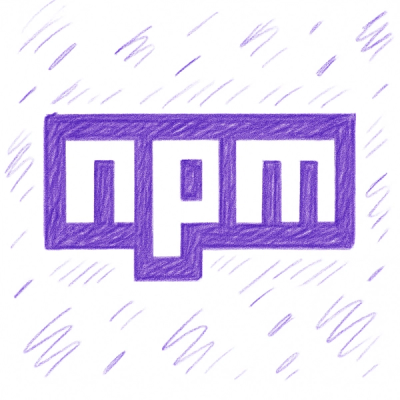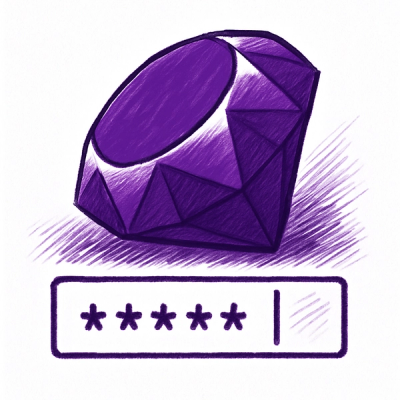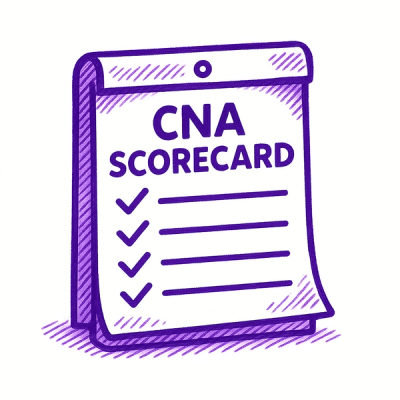
Security News
npm Adopts OIDC for Trusted Publishing in CI/CD Workflows
npm now supports Trusted Publishing with OIDC, enabling secure package publishing directly from CI/CD workflows without relying on long-lived tokens.
The goal of this gem is to centralize Danger plugins and rules that to be used by multiple GitLab projects.
Add this line to your application's Gemfile:
gem 'gitlab-dangerfiles', require: false
And then execute:
$ bundle install
Or install it yourself as:
$ gem install gitlab-dangerfiles
In your project's Dangerfile, add the following to import the plugins and rules from this gem:
require 'gitlab-dangerfiles'
Gitlab::Dangerfiles.for_project(self) do |dangerfiles|
# Import all plugins from the gem
dangerfiles.import_plugins
# Import all rules from the gem
dangerfiles.import_dangerfiles
# Or import only a subset of rules
dangerfiles.import_dangerfiles(only: %w[changes_size])
# Or import all rules except a subset of rules
dangerfiles.import_dangerfiles(except: %w[commit_messages])
# Or import only a subset of rules, except a subset of rules
dangerfiles.import_dangerfiles(only: %w[changes_size], except: %w[commit_messages])
end
For simple projects such as libraries, you can use the convenience method import_defaults:
Gitlab::Dangerfiles.for_project(self) do |dangerfiles|
# Imports all plugins, rules and the default reviewer roulette
dangerfiles.import_defaults
end
You may optionally pass a project name; by default, ENV['CI_PROJECT_NAME'] will be used:
Gitlab::Dangerfiles.for_project(self, 'my-project') do |dangerfiles|
# Imports all plugins, rules and the default reviewer roulette
dangerfiles.import_defaults
end
Note that your custom plugins and rules (unless you exclude them with except) are automatically imported by the gem.
Plugins are imported in alphabetical order. Gem plugins are loaded before project-local plugins.
Gem and project-local rules are combined, filtered, and loaded in alphabetical order.
Because all rules are executed as soon as they are imported, you should move all
logic from your root Dangerfile to project-local rules in
danger/*/Dangerfile.
For example:
Bad
Dangerfile:
Gitlab::Dangerfiles.for_project(self) do |dangerfiles|
dangerfiles.import_dangerfiles(only: %w[z_add_labels])
end
# Bad, because gem rule `z_add_labels` has already been executed with empty labels list.
helper.labels_to_add << 'important'
Good
Dangerfile:
Gitlab::Dangerfiles.for_project(self) do |dangerfiles|
dangerfiles.import_dangerfiles(only: %w[z_add_labels])
end
danger/labels/Dangerfile:
# Good. Execution order:
# * root `Dangerfile`
# * project-local `danger/my_labels/Dangerfile`
# * gem rule `danger/z_add_labels/Dangerfile`
helper.labels_to_add << 'important'
Danger plugins are located under lib/danger/plugins.
Danger::Helper available in Dangerfiles as helperDanger::Changelog available in Dangerfiles as changelogDanger::Roulette available in Dangerfiles as rouletteFor the full documentation about the plugins, please see https://www.rubydoc.info/gems/gitlab-dangerfiles.
Default configuration can be overriden in the form helper.config.CONFIG_NAME = NEW_VALUE (CONFIG_NAME being a value configuration key).
Alternatively, you can also get/set configuration on the engine directly via Gitlab::Dangerfiles::Engine#config.
project_root: The project root path. You shouldn't have to override it.project_name: The project name. Currently used by the Roulette plugin to fetch relevant
reviewers/maintainers based on the project name. Default to ENV["CI_PROJECT_NAME"].ci_only_rules: A list of rules that cannot run locally.files_to_category: A hash of the form { filename_regex => categories, [filename_regex, changes_regex] => categories }.
filename_regex is the regex pattern to match file names. changes_regex is the regex pattern to
match changed lines in files that match filename_regex. Used in helper.changes_by_category, helper.changes, and helper.categories_for_file.disabled_roulette_categories: A list of categories that roulette can be disabled. In the projects where specific review workflows are not ready, this can be used to disable them.Danger rules are located under lib/danger/rules.
changelogThis rule ensures the merge request follows our Changelog guidelines.
changes_sizeThis rule ensures the merge request isn't too big to be reviewed, otherwise it suggests to split the MR.
code_size_thresholds: A hash of the form { high: 42, medium: 12 } where
:high is the lines changed threshold which triggers an error, and
:medium is the lines changed threshold which triggers a warning.commit_messagesmax_commits_count: The maximum number of allowed non-squashed/non-fixup commits for a given MR.
A warning is triggered if the MR has more commits.commits_counterThis rule posts a failure if the merge request has more than 20 commits.
danger_code_reviewThis rule posts a warning/failure when @GitLabDuo isn't assigned as a reviewer.
duo_code_review: Whether a review from GitLab Duo Code is :mandatory or :optional.
Default to :optional.metadataThis rule ensures basic metadata such as assignee, milestone and description are set on the merge request.
simple_rouletteThe library includes a simplified default reviewer roulette that you can use in your project. To use it in your project, perform the following steps:
If not yet done, create a Dangerfile at the top-level of your project. Refer to Usage to
see how to set it up.
When using the default roulette, use import_defaults or import it manually when setting
up the gitlab-dangerfiles instance:
require 'gitlab-dangerfiles'
Gitlab::Dangerfiles.for_project(self) do |dangerfiles|
dangerfiles.import_plugins
dangerfiles.import_dangerfiles(only: %w[simple_roulette])
end
By default, the simple roulette only suggests reviewers in a comment. You can, optionally, configure it to automatically assign reviewers from the roulette to your merge requests.
Configure auto_assign_for_roulette_roles to specify which roles to assign (:reviewer, :maintainer, or both). If empty (default), no auto-assignment occurs.
Optionally, configure auto_assign_for_roulette_labels to only auto-assign for Merge Requests with specific labels. If empty (default), auto-assignment applies to all MRs.
# Auto-assign reviewers for all MRs
helper.config.auto_assign_for_roulette_roles = [:reviewer]
# Auto-assign both reviewer and maintainer for all MRs
helper.config.auto_assign_for_roulette_roles = [:reviewer, :maintainer]
# Auto-assign reviewers only for a specific MR label
helper.config.auto_assign_for_roulette_roles = [:reviewer]
helper.config.auto_assign_for_roulette_labels = ["maintenance::dependency"]
Note: These options aren't actually used in the simple_roulette rule, but can be used in your own
implementation of the roulette if you use roulette.required_approvals/roulette.codeowners_approvals.
included_optional_codeowners_sections_for_roulette: Indicates which optional codeowners sections
should be included in roulette. Default to [].excluded_required_codeowners_sections_for_roulette: Indicates which required codeowners sections
should be excluded from roulette. Default to [].type_labelIf the changelog plugin is available, it tries to infer a type label from the Changelog trailer of the MR.
z_add_labelsThis rule adds labels set from other rules (via helper.labels_to_add), with a single API request.
z_retry_linkThis rule adds a retry link to the job where Danger ran at the end of the Danger message, only if there's any other message to post.
In order to run danger on GitLab CI, perform the following steps:
Dangerfile at the top-level of your project. Refer to Usage to
see how to set it up..gitlab-ci.yml, include CI configuration
which defines danger-review CI job:include:
- project: 'gitlab-org/quality/pipeline-common'
file:
- '/ci/danger-review.yml'
api and role Developer.DANGER_GITLAB_API_TOKEN (Masked but not Protected) and use Project access token as value.See a real world example.
GemfileDanger is a Ruby project and uses bundler to manage
its dependencies. This requires a project to have a Gemfile and
Gemfile.lock commited. This is helpful especially if Danger is also used
locally - with lefthook, for example.
In order to skip Ruby and bundler dependency in a project, use bundle commands directly
in the CI configuration:
include:
- project: 'gitlab-org/quality/pipeline-common'
file: '/ci/danger-review.yml'
danger-review:
before_script:
- bundle init
# For latest version
- bundle add gitlab-dangerfiles
# OR
# For a pinned version
- bundle add gitlab-dangerfiles --version 3.1.0
You can run a Danger Rake task locally in a project to detect Danger errors before pushing commits to a remote branch.
Install gitlab-dangerfiles in your project.
Add the following to your project's Rakefile:
require 'gitlab-dangerfiles'
Gitlab::Dangerfiles.load_tasks
To run the Danger Rake task in a project that has master as the default branch, run:
bundle exec rake danger_local
To run the Danger Rake task in a project that doesn't have master as the default branch, you must set the
DANGER_LOCAL_BASE environment variable. For example, in a project with main as the default branch:
DANGER_LOCAL_BASE="origin/main" bundle exec rake danger_local
The following lint violations generate warnings:
All other lint violations generate errors, except when the MR has Squash commits when merge request is accepted enabled, which downgrades lint violations to warnings.
Latest documentation can be found at https://www.rubydoc.info/gems/gitlab-dangerfiles.
After checking out the repo, run bin/setup to install dependencies. Then, run rake spec to run the tests. You can also run bin/console for an interactive prompt that will allow you to experiment.
To install this gem onto your local machine, run bundle exec rake install.
lefthook install
To test an unreleased change in an actual merge request, you can create a merge request that will install the unreleased version of gitlab-dangerfiles. Bundler can install gems by specifying a repository and a revision from Git.
For example, to test gitlab-dangerfiles changes from the your-branch-name branch in gitlab-org/gitlab, in the Gemfile:
group :development, :test, :danger do
gem 'gitlab-dangerfiles', require: false, feature_category: :tooling,
git: 'https://gitlab.com/gitlab-org/ruby/gems/gitlab-dangerfiles.git', # rubocop:disable Cop/GemFetcher -- Testing unreleased changes
ref: 'your-branch-name'
end
See an example for more details.
Bug reports and merge requests are welcome at https://gitlab.com/gitlab-org/gitlab-dangerfiles. This project is intended to be a safe, welcoming space for collaboration, and contributors are expected to adhere to the code of conduct.
Make sure to include a changelog entry in your commit message and read the changelog entries section.
Automated gem release process is used to release new version of gitlab-dangerfiles through pipelines, and this will:
gitlab-dangerfiles project: https://gitlab.com/gitlab-org/ruby/gems/gitlab-dangerfiles/-/releasesWe follow this release process in a separate merge request from the one that introduced the changes. The release merge request should just contain a version bump.
Changes merged since the last release should have had changelog entries (see Contributing).
If changelog entries are missing, you can also edit the release notes after it's being released.
Use a Release merge request template and create a merge request to update the version number in version.rb, and get the merge request merged by a maintainer.
This will then be packaged into a gem and pushed to rubygems.org by the CI/CD.
For example: Bump version to 3.4.3.
The gem is available as open source under the terms of the MIT License.
Everyone interacting in the Gitlab::Danger project's codebases, issue trackers, chat rooms and mailing lists is expected to follow the code of conduct.
FAQs
Unknown package
We found that gitlab-dangerfiles demonstrated a healthy version release cadence and project activity because the last version was released less than a year ago. It has 1 open source maintainer collaborating on the project.
Did you know?

Socket for GitHub automatically highlights issues in each pull request and monitors the health of all your open source dependencies. Discover the contents of your packages and block harmful activity before you install or update your dependencies.

Security News
npm now supports Trusted Publishing with OIDC, enabling secure package publishing directly from CI/CD workflows without relying on long-lived tokens.

Research
/Security News
A RubyGems malware campaign used 60 malicious packages posing as automation tools to steal credentials from social media and marketing tool users.

Security News
The CNA Scorecard ranks CVE issuers by data completeness, revealing major gaps in patch info and software identifiers across thousands of vulnerabilities.